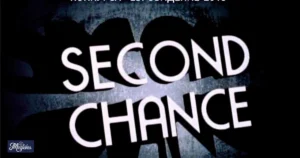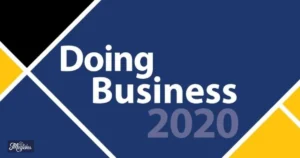“Want to sound more professional or polite? Here are different ways to say ‘please proceed’ in your daily conversations and writing!”
When communicating, especially in professional settings, the phrase “please proceed” is commonly used. It signals that the person can move forward with their task, thought, or speech. However, while this is a polite and appropriate phrase, you may find that varying your language can keep your conversations fresh and engaging. Whether you’re in a meeting, delivering a presentation, or even just casually interacting with friends, using different ways to say “please proceed” can help enhance your communication skills.
As we continue to develop our ability to communicate effectively, it’s important to diversify our vocabulary. Expanding your phrases not only demonstrates your linguistic versatility, but it also makes you sound more polished and thoughtful in both casual and formal conversations. This blog will explore 35 other ways to say “please proceed,” which can be used in various contexts to help you sound more dynamic and confident.
In this article, you will find several alternatives to “please proceed,” each tailored for different situations and speakers. Some are more formal, while others are casual or humorous. I’ll provide a scenario for each alternative and give insight into how you can use these phrases in day-to-day conversations. Whether you are in a business meeting or having a light-hearted chat, you will find something useful for every context.
35 Other Ways to Say “Please Proceed”
1. Go Ahead
- Scenario: A colleague hesitates before continuing their presentation, and you encourage them by saying, “Go ahead.”
- Explanation: A casual and friendly phrase used to indicate permission to continue.
- Additional Tip: Suitable for informal settings or when you want to show eagerness.
2. Please Continue
- Scenario: You want to give a speaker the floor to continue their explanation, so you say, “Please continue.”
- Explanation: A polite and professional phrase, ideal for more formal situations.
- Additional Tip: Great for maintaining a respectful tone during meetings or lectures.
3. Feel Free to Go On
- Scenario: Your colleague pauses and looks for encouragement to continue, and you say, “Feel free to go on.”
- Explanation: An encouraging phrase to make someone feel comfortable continuing at their own pace.
- Additional Tip: Use it in informal settings or when you want to create a relaxed atmosphere.
4. Carry On
- Scenario: In a casual conversation, your friend is telling a story and pauses. You say, “Carry on!”
- Explanation: Casual, friendly, and often used in informal settings to encourage someone to continue.
- Additional Tip: Works well in light-hearted or informal situations, like casual chats or storytelling.
5. Go Right Ahead
- Scenario: A colleague asks for permission to continue presenting, and you respond with, “Go right ahead.”
- Explanation: Slightly more emphatic, signaling immediate approval for someone to continue.
- Additional Tip: Best used when you want to quickly move the conversation along or give an enthusiastic go-ahead.
6. Take It Away
- Scenario: In a meeting, you encourage a presenter by saying, “Take it away!”
- Explanation: Adds energy and excitement, often used in informal or dynamic situations.
- Additional Tip: This phrase is great for encouraging presentations or performances.
7. You’re Up Next
- Scenario: After someone completes their part of the discussion, you say, “You’re up next” to encourage the next speaker.
- Explanation: A way to signal that it’s the next person’s turn, particularly in group settings.
- Additional Tip: Useful in situations with multiple speakers, such as conferences or workshops.
8. Go On Ahead

- Scenario: A colleague seems unsure whether to continue, and you reassure them with, “Go on ahead.”
- Explanation: A gentle prompt that encourages someone to move forward without hesitation.
- Additional Tip: Ideal when someone needs reassurance or is hesitant to continue.
9. Please Carry On
- Scenario: You ask a speaker to continue, saying, “Please carry on.”
- Explanation: Polite and respectful, perfect for maintaining the flow of conversation.
- Additional Tip: Best for formal settings or when you want to keep the conversation organized.
10. Go On, Please
- Scenario: You ask a friend to continue their thought or story by saying, “Go on, please.”
- Explanation: A polite, casual way to encourage someone to continue.
- Additional Tip: Works well in informal conversations with friends and family.
11. Proceed With What You Were Saying
- Scenario: You want to signal someone to pick up where they left off after a pause, so you say, “Proceed with what you were saying.”
- Explanation: More formal and specific, used when you want to acknowledge their prior point.
- Additional Tip: Useful in professional or academic settings.
12. Keep Going
- Scenario: A colleague begins to explain a point but hesitates. You say, “Keep going.”
- Explanation: A casual and encouraging way to get someone to continue.
- Additional Tip: Works well when you want to express enthusiasm for someone’s ideas.
13. Feel Free to Continue
- Scenario: A colleague is ready to continue their presentation, and you say, “Feel free to continue.”
- Explanation: A polite, open way to give someone permission to continue without pressure.
- Additional Tip: Ideal for both formal and informal contexts where you want to encourage the speaker without rushing them.
14. Let’s Hear More
- Scenario: A friend is telling an interesting story but stops. You say, “Let’s hear more.”
- Explanation: A conversational, friendly way to encourage someone to continue sharing.
- Additional Tip: Perfect in informal settings or when you’re interested in hearing more details.
15. You Have the Floor
- Scenario: In a meeting, you say to a speaker, “You have the floor,” encouraging them to continue with their presentation.
- Explanation: A more formal phrase used in professional settings, signaling that the person has the opportunity to continue speaking.
- Additional Tip: Often used in formal meetings or public speaking events.
16. By All Means, Continue
- Scenario: In a polite conversation, you say, “By all means, continue” to invite someone to continue speaking.
- Explanation: A formal and respectful way to give permission to continue.
- Additional Tip: Best used in formal or academic settings where courtesy is key.
Other Ways to Say “Sincerely
17. Go Right Ahead and Continue
- Scenario: You’re in a meeting, and someone asks for permission to proceed. You say, “Go right ahead and continue.”
- Explanation: A variation of “go ahead,” but with added emphasis on allowing them to continue.
- Additional Tip: A slightly more formal way of giving the speaker the green light.
18. Let’s Keep It Moving
- Scenario: During a team meeting, someone is speaking too slowly, and you want to encourage them to continue, saying, “Let’s keep it moving.”
- Explanation: A more casual, action-oriented way to encourage someone to speed up and continue.
- Additional Tip: Best used when time is limited, and you want to encourage efficiency.
19. Go On With It
- Scenario: You tell a friend who is hesitating to finish their story by saying, “Go on with it.”
- Explanation: A casual way to prompt someone to continue without waiting for permission.
- Additional Tip: Suitable for friendly conversations where you want to keep things light.
20. Please Go Ahead
- Scenario: A colleague pauses before continuing their explanation. You say, “Please go ahead.”
- Explanation: A formal, polite phrase used in professional settings to allow someone to continue.
- Additional Tip: Use in meetings, presentations, or any scenario where a formal tone is preferred.
21. Go For It
- Scenario: During a casual chat, a friend looks uncertain about continuing their thought. You encourage them with, “Go for it.”
- Explanation: A motivational, informal way to encourage someone to continue.
- Additional Tip: Best for informal settings where you want to show support and excitement.
22. Feel Free to Carry On
- Scenario: A speaker stops momentarily, and you say, “Feel free to carry on.”
- Explanation: A supportive phrase that makes it clear that the speaker is welcome to continue without feeling rushed.
- Additional Tip: Use in both casual and semi-formal settings when you want to keep the conversation flowing.
23. Continue What You Were Saying
- Scenario: In a meeting, you gently interrupt and ask the speaker to continue their thought: “Continue what you were saying.”
- Explanation: A polite, more specific way to prompt someone to continue from their last statement.
- Additional Tip: Useful in both business and personal settings when you want clarity.
24. Pick Up Where You Left Off
- Scenario: A presenter in a workshop pauses and you say, “Pick up where you left off.”
- Explanation: A phrase used when you want someone to continue from their last statement or thought.
- Additional Tip: Works well when a presentation or conversation has been interrupted.
25. Keep It Up
- Scenario: During a casual meeting, you want to show appreciation for someone’s presentation and say, “Keep it up.”
- Explanation: An encouraging phrase that motivates someone to continue in the same positive direction.
- Additional Tip: Best used in casual settings where motivation is needed.
26. Go On With Your Point
- Scenario: A colleague is explaining something and you want them to continue, saying, “Go on with your point.”
- Explanation: A polite way to redirect someone back to their original thought or point.
- Additional Tip: Useful for professional discussions where focus is important.
27. Keep Sharing
- Scenario: In a group discussion, someone starts telling an interesting story, and you encourage them by saying, “Keep sharing.”
- Explanation: A supportive way to show you’re interested in hearing more.
- Additional Tip: Great in informal conversations where you want to foster open sharing.
28. Proceed As You Were
- Scenario: After a brief interruption in a presentation, you say, “Proceed as you were.”
- Explanation: A formal phrase used to encourage someone to continue where they left off.
- Additional Tip: Perfect in formal meetings or presentations when you want to maintain the flow.
29. Let’s Keep Going
- Scenario: During a group activity, you encourage everyone to continue with, “Let’s keep going.”
- Explanation: An active way to maintain momentum during discussions or projects.
- Additional Tip: Best used in dynamic group settings where everyone’s participation is needed.
30. Take the Stage
- Scenario: In a performance setting, you encourage the performer to continue by saying, “Take the stage.”
- Explanation: Used when someone is about to perform or present and is ready to continue.
- Additional Tip: Ideal for performances or speeches.
31. Go Ahead and Speak
- Scenario: You invite someone to continue their explanation, saying, “Go ahead and speak.”
- Explanation: A direct but polite prompt to encourage continued conversation.
- Additional Tip: Effective in situations where you want to quickly return the conversation to the other person.
32. Don’t Stop Now
- Scenario: You encourage a friend or colleague to continue a great idea or story by saying, “Don’t stop now.”
- Explanation: A motivating and energetic prompt to encourage them to keep going.
- Additional Tip: Works well when you’re excited about what’s being said and want to hear more.
33. Please Go Right On
- Scenario: You give someone permission to continue a presentation with, “Please go right on.”
- Explanation: A more formal version of “go on” used in professional settings.
- Additional Tip: Best for respectful situations where you want to maintain a formal tone.
34. Continue to Speak
- Scenario: You politely encourage someone to keep going with, “Continue to speak.”
- Explanation: Simple and formal, this phrase encourages a person to keep their speech flowing.
- Additional Tip: Useful in professional or academic contexts.
35. You May Continue

- Scenario: After a break in a conversation or presentation, you say, “You may continue.”
- Explanation: A polite and formal phrase used to give permission to continue speaking.
- Additional Tip: Perfect for formal meetings, presentations, and interviews.
Pros and Cons of Using Different Ways to Say “Please Proceed”
Pros:
- Variety and Flexibility: Using different phrases allows you to adapt to various situations, making your communication more dynamic.
- Politeness and Professionalism: Many of these alternatives sound more refined and professional, making them ideal for business environments.
- Engagement: By using varied language, you can keep the conversation lively and engaging for your audience.
Cons:
- Overuse of Certain Phrases: If you rely too much on one alternative, it can sound repetitive.
- Tone Misunderstanding: Some phrases, like “go on ahead,” might sound too casual for formal situations.
Conclusion
Expanding your vocabulary can significantly improve your communication skills. By using a variety of phrases to say “please proceed,” you show that you are attentive and thoughtful in your interactions. Whether in professional settings, casual conversations, or even public speaking engagements, using the right phrase can set the tone for positive and engaging conversations.

Hi, I’m Zadie Smith: I’m dedicated to helping others master English through practical tips. I enjoy making complex ideas simple and accessible for everyone.










